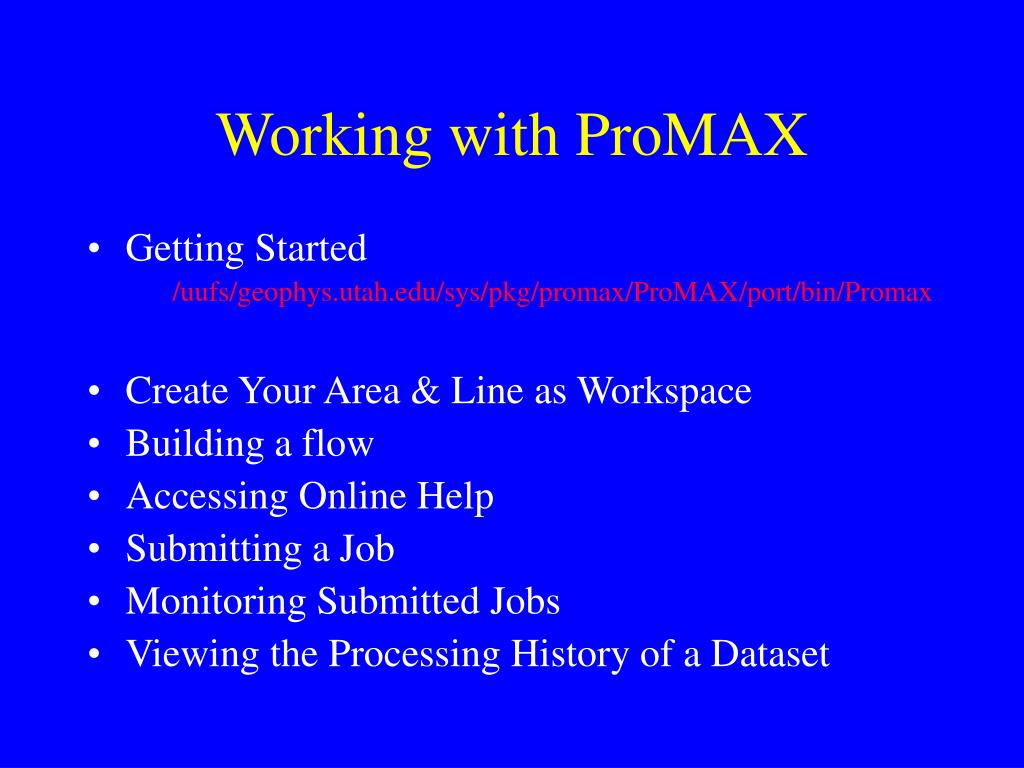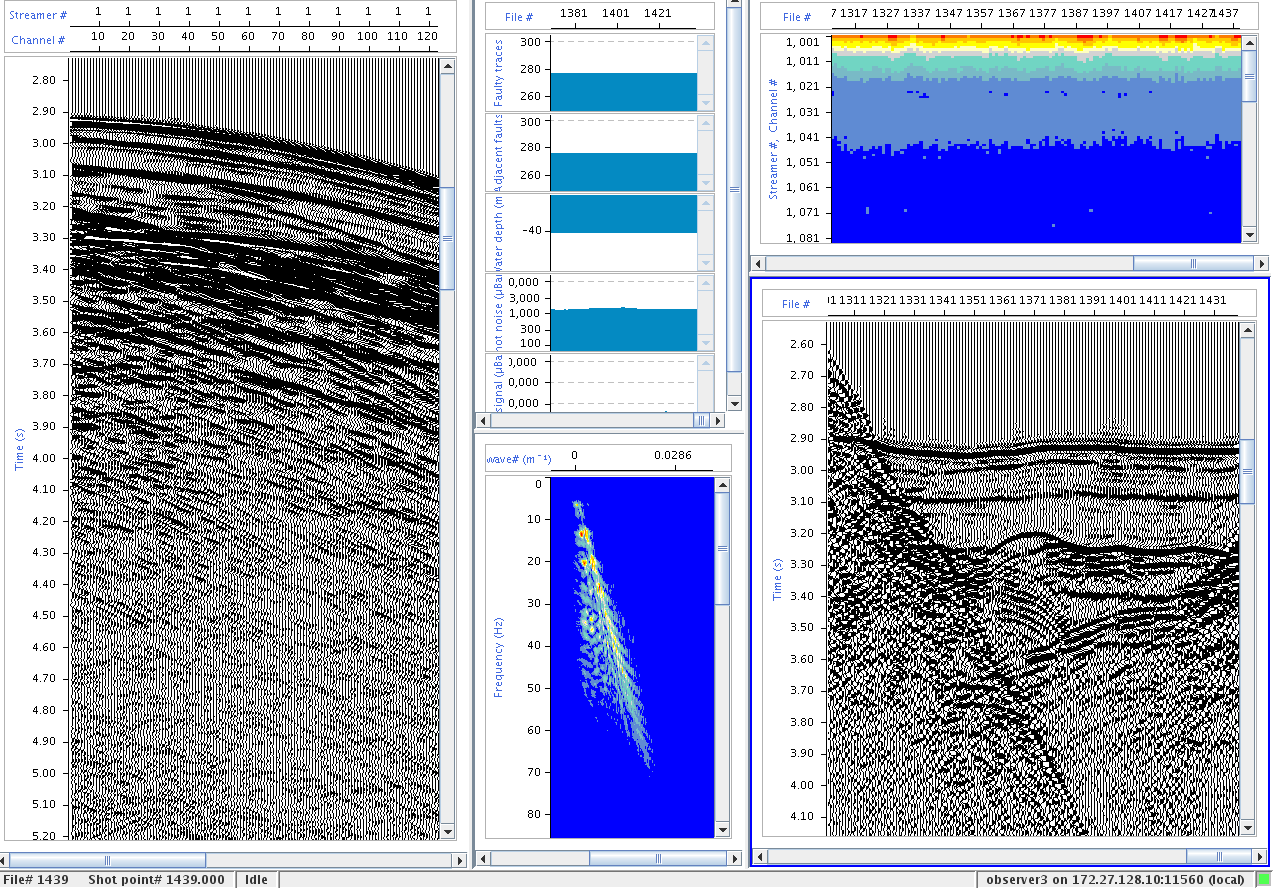

- #Promax seismic processing tutorial software download#
- #Promax seismic processing tutorial full#
- #Promax seismic processing tutorial windows 10#
This is because Windows 10 does not support tape drives.
#Promax seismic processing tutorial software download#
Proprietary formats including RODE encapsulation and de-encapsulation can also be handled.Ī free version of Magma is available for download which will allow you to read and analyse data, but will not allow you to produce any output from the data. Please register to access the trial version from our Software Download utility.ĭislaimer - If you are intending on directily connecting tape drives to the machine that Magma is running on, we would reccomend that you use Microsoft Windows Server 2016/2019. Quality control displays and listings can be routed to screen, databases and/or print files as required.

Magma runs on Windows and Linux platforms and supports a range of SCSI tape devices and data formats, including long records. Standard output conforms to the latest version of SEG-Y leveraging Troika’s close involvement with the SEG technical standard committee. Magma software is able to decode seismic historic data formats from 9-track, 21-track and various tape cartridge media and provides a comprehensive suite of quality control (QC) functionality while transcribing to modern high capacity tape and disk libraries. It has established itself as the recommended front end for several industry standard data analysis packages including being the chosen plug-in for “Foreign Tape Input” to Halliburton’s SeisSpace ProMax seismic processing software family.

It is offered with numerous user resources including tutorials, movies, common workflows, knowledge base articles, and new feature documents.Magma is a highly flexible seismic data transcription, reformatting and manipulation application capable of handling a wide range of legacy and modern recording formats and media types. VISTA software is a 64-bit Microsoft Windows application with annual software releases and regular product updates. Prestack and poststack time-depth migration and analysis Interactive 2D multiline tie and 3D multisurvey merge Worth Basin, TX - A tutorial, Interpretation, 2, SF91-SF110. Montage window for creating sophisticated output plotsĪVO and amplitude variation with AVA processing capabilities Proficient in seismic processing software: ProMAX, SeisUP. Multicomponent and converted-wave QC and processing Surface-consistent scale, deconvolution, and staticsĪdvanced noise attenuation and signal enhancement techniques Programming development interface for users to add their own algorithmsĬomprehensive header manipulation, interactive spreadsheets, and text file imports and exports

Interactive tools for station geometry prediction, verification, and QC Interactive windows that broadcast between multiple screens for powerful QC functions Windows-based, single-user, portable, robust, and easy-to-learn icon-driven software
#Promax seismic processing tutorial full#
The complete solution, from QC to prestack migration and time-depth image analysis.Ĭomplete VSP QC and processing for 2D and 3D VSP data.ĢD VSP available as a stand-alone or add-in module to VISTA Field QC, VISTA Field Pro, or VISTA Full Pro.ģD VSP module available as an add-on module to VISTA Full Pro. The premier tool for in-field processing and QCĪdvanced field package, including full-geometry QC and poststack migration. VISTA software is available in four packages: The software supports advanced processing capabilities including AVO and angle of incidence (AVA) analysis, multicomponent processing, and 2D and 3D VSP processing. You can also add in your own algorithms through a C++ or MATLAB SDK interface. With VISTA software, you can easily navigate workflows and seamlessly evaluate datasets using the interactive and interlinked displays. VISTA desktop seismic data processing software provides data processing from early-stage acquisition QC to final processing and interpretation of 2D and 3D seismic data acquired on land or offshore or as a vertical seismic profile (VSP), in all industry and manufacturer data formats.


 0 kommentar(er)
0 kommentar(er)
